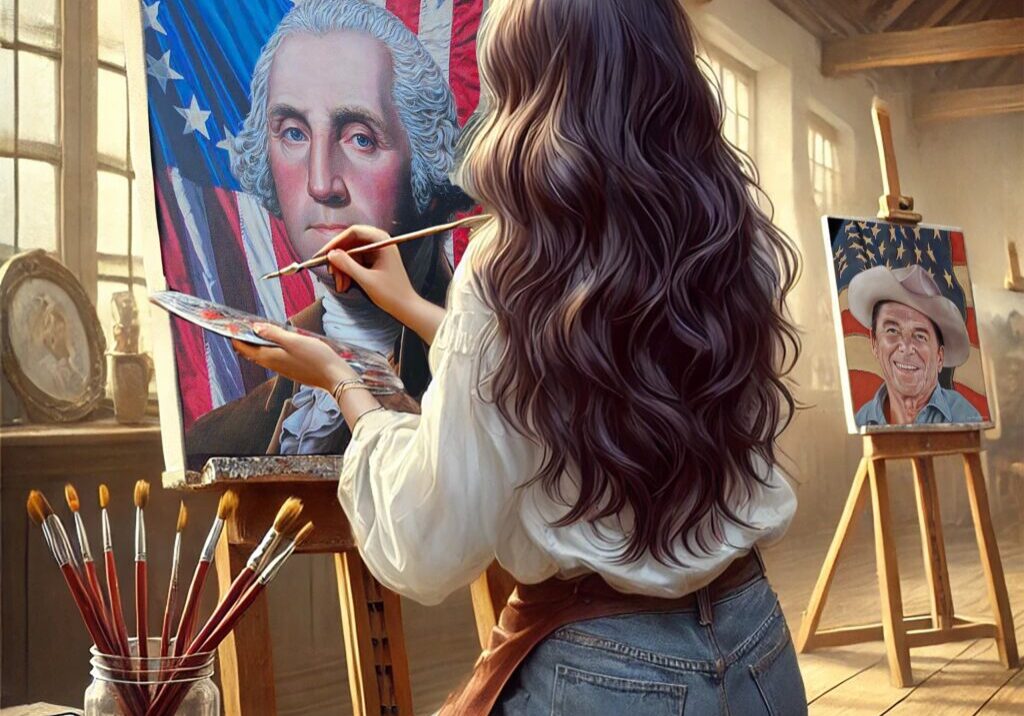
Flags Banners and Battle Art: The March of Meaning in Motion
In the Revolution, messages did not always arrive on paper. Sometimes they snapped in the wind. Painted on linen or stitched from salvaged cloth, Revolutionary flags and banners became a mobile language. They moved through crowds, down muddy roads, across battlefields. They were not just symbols of allegiance. They were art in motion. They told people where to look and what to believe. As I painted these elements into the mural, I treated each one like a spoken sentence. Every stripe, every motto, every angle of lift carried meaning. Unlike today’s uniform flags, early American banners were wildly varied. Each colony, each regiment, even each protest march created its own. Some bore pine trees or rattlesnakes. Others displayed anchors, crescents, or liberty caps. Slogans often wrapped the edge. Appeal to Heaven. Unite or Die. Liberty and Union. These were not subtle. They were visual declarations, designed to be read quickly, even in chaos. The Gadsden flag, with its coiled snake and defiant message, remains one of the most recognized. But others, less remembered, carried equally potent messages. The Bedford flag showed a raised arm and sword with the phrase, “Vince aut morire” – conquer or die. Flags like these were meant to stir and to warn. They spoke both to the enemy and to those marching behind. What fascinates me is how handmade these objects were. They bore the brushstrokes and seams of their creators. Paint bled at the corners. Letters wobbled. Edges frayed from wind and rain. This imperfection gave them life. They did not need to be pristine. They needed to be seen. In my own painting, I echoed that roughness. I let the banners in the mural bend with imagined wind. I showed fabric curling, shadows cast unevenly, letters slightly faded. These details tell a truth that perfection cannot. Banners also functioned in ritual. They were carried into parades, funerals, and battlefield ceremonies. They marked the moment when protest became movement. And they made each event a visual statement. Imagine a child watching a crowd pass, faces obscured by dust, but the banner high and clear. That image becomes memory. That memory becomes history. From a compositional point of view, banners are gifts to the painter. They slice diagonals through a crowded scene. They guide the eye upward. They connect figures who may not otherwise interact. In the mural, I used banners to link distant elements. A flag raised in one corner echoes the color of a sash across the canvas. A phrase printed near the top completes a thought started by a silent gesture below. And yet banners also carried danger. A raised flag was a target. To hold one was an act of defiance. In some paintings from the period, the banner bearer is positioned at the edge, partly obscured, as if to protect them even in art. I followed this logic in the mural. Some banners are central. Others appear in fragments. A corner peeking from behind a crowd. A pole grasped but not fully seen. These choices reflect how meaning moved in and out of view during the Revolution. Flags and banners did not survive for their beauty. They survived because they mattered. People remembered what they saw waving above the crowd. They remembered the shape, the sound, the color in motion. These objects were not just tools of war. They were declarations of becoming. And today, they still speak – across centuries, across canvas, across memory.

